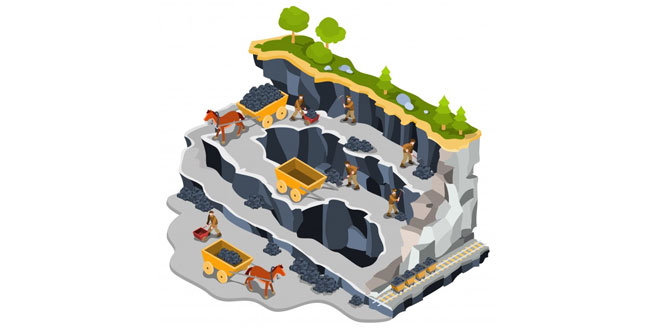Question: How do we need to conserve mineral resources?
Answer: In order to conserve mineral resources, we must see to that our consumption of minerals does not increase our wants. We must remember that these resources are one of the greatest gifts of God and we must use these in such a manner that our future generations also enjoy this gift.
Question: Describe the distribution of coal in India.
Answer: In India coal occurs in rock series of two main geological ages, namely Gondwana, a little over 200 million years in age and in tertiary deposits which are only about 55 million years old. The major resources of Gondwana coal, which are metallurgical coal, are located in Damodar valley (West Bengal-Jharkhand). Jharia, Raniganj, Bokaro are important coalfields. The Godavari, Mahanadi, Son and Wardha valleys also contain coal deposits. Tertiary coals occur in the north eastern states of Meghalaya, Assam, Arunachal Pradesh and Nagaland. Jharkhand is the largest producer where Jharia, Bokaro, Karampur, Palamu are the major coal fields. In West Bengal, Raniganj, Jalpaiguri and Darjeeling are the coal fields. Sarguja, Bilaspur, Raigarh and Bastar districts are coal fields found in Chhattisgarh. M.P. has coal fields in Chinaware district and in Maharashtra, Chanda is the main field.
Question: Why do you think that solar energy has a bright future in India?
Answer: Solar energy has bright future in India because
- India is blessed with plenty of solar energy because most part of the country receive bright monsoon period.
- India has developed technology to use solar energy for cooking, water heating, space heating, crop drying, etc.
- It is the abundant, inexhaustible and universal source of energy.
- India is tropical country.
- It is pollution free.
Question: Describe the impact of globalization on Indian agriculture.
Answer: Globalization is the new trend in the world scenario, which aims at integrating our economy with that of the world:
- Its aim is to be realized within a certain time frame.
- It is based on free and open international trade.
- It ensures that only quality and competitive goods would survive the world market.
Impact:
- Indian farmers now are exposed to new industrial environment. They would have to complete with other farmers of other countries in producing quality and competitive goods.
- With the use of favorable climatic conditions and soil conditions, improved and new implements, efficient labour we would have to produce goods, which could complete in the world markets.
- India would need the technologies being used by foreign countries. Infrastructure like development of roads, electricity, irrigation and credit facilities will have to be developed.
 Class Notes NCERT Solutions for CBSE Students
Class Notes NCERT Solutions for CBSE Students





